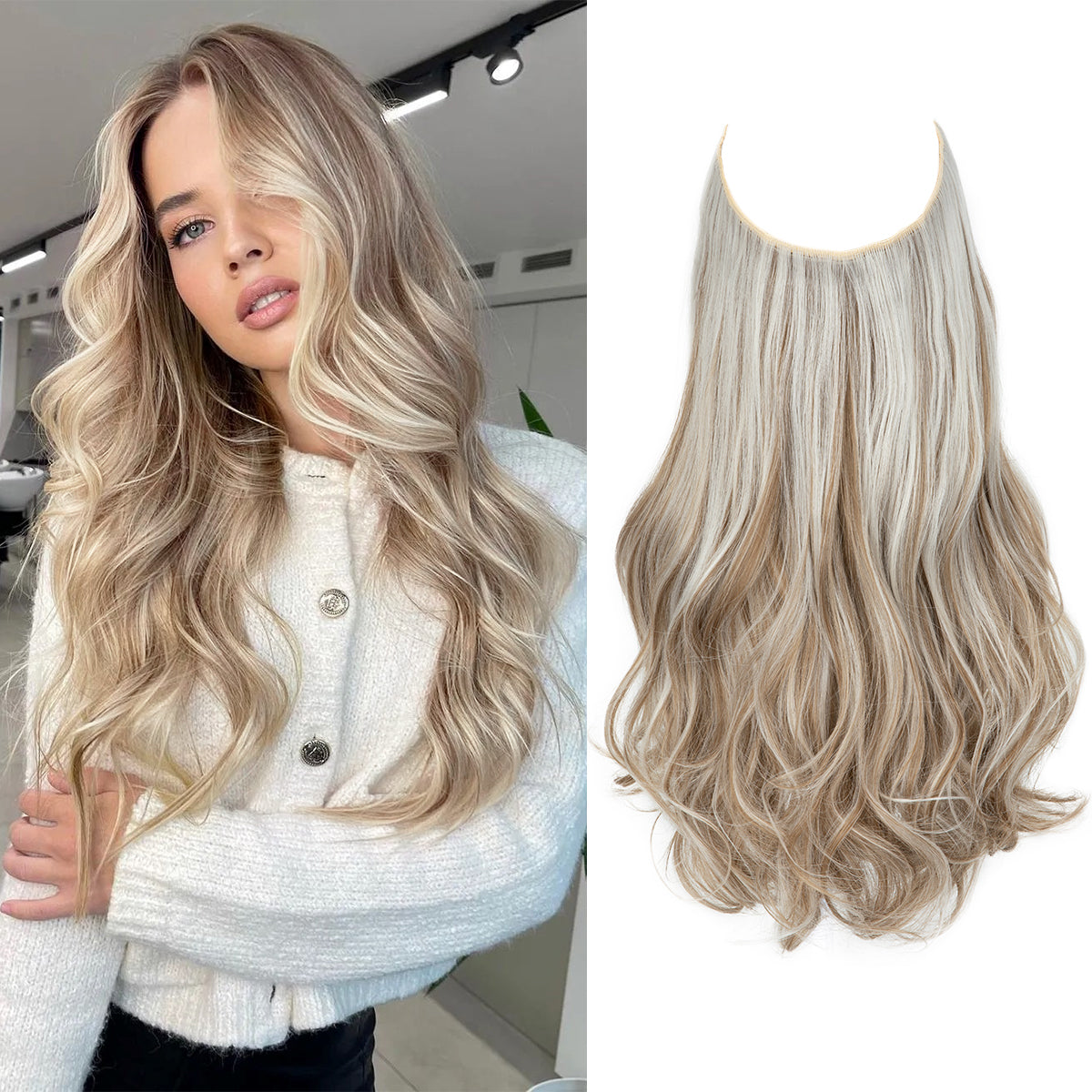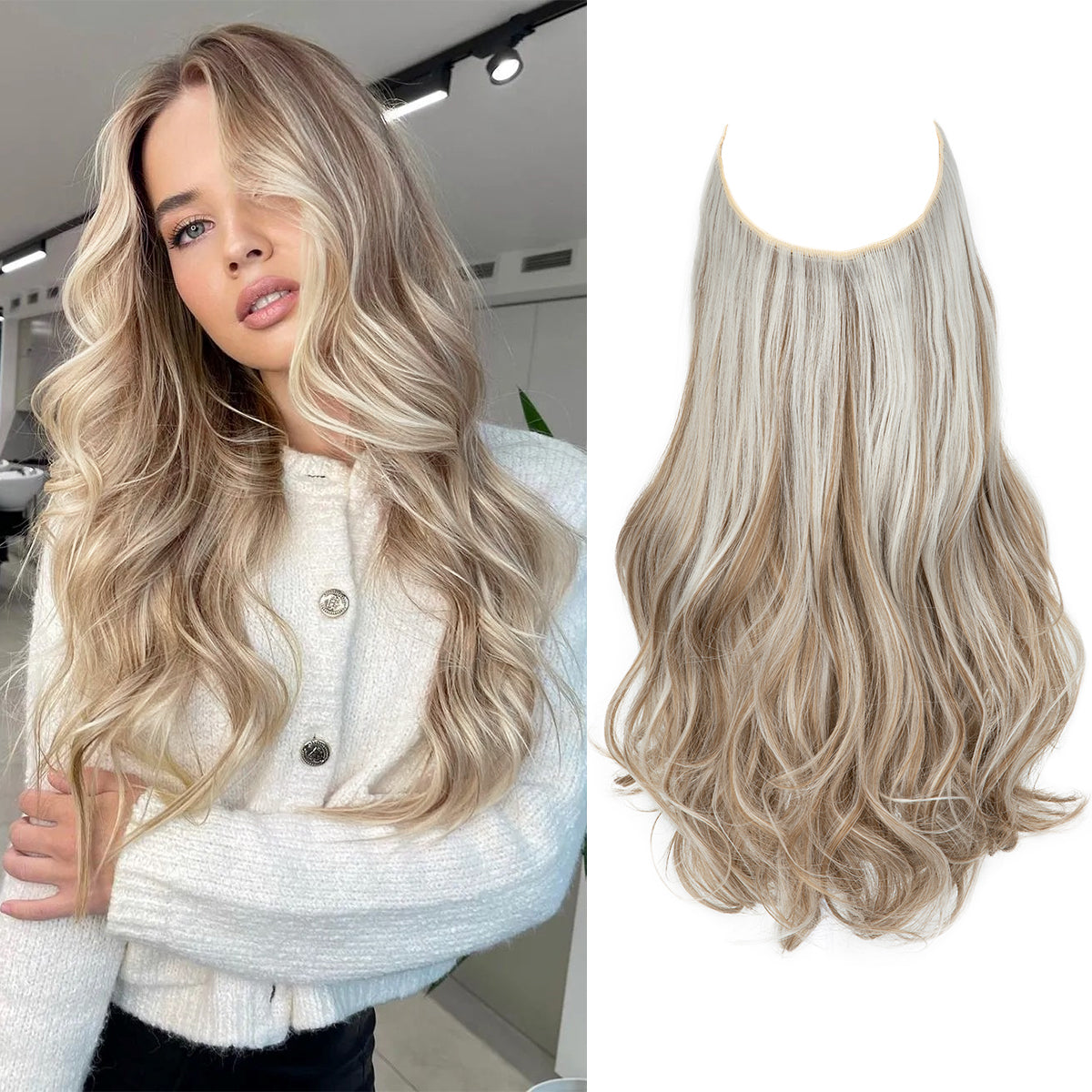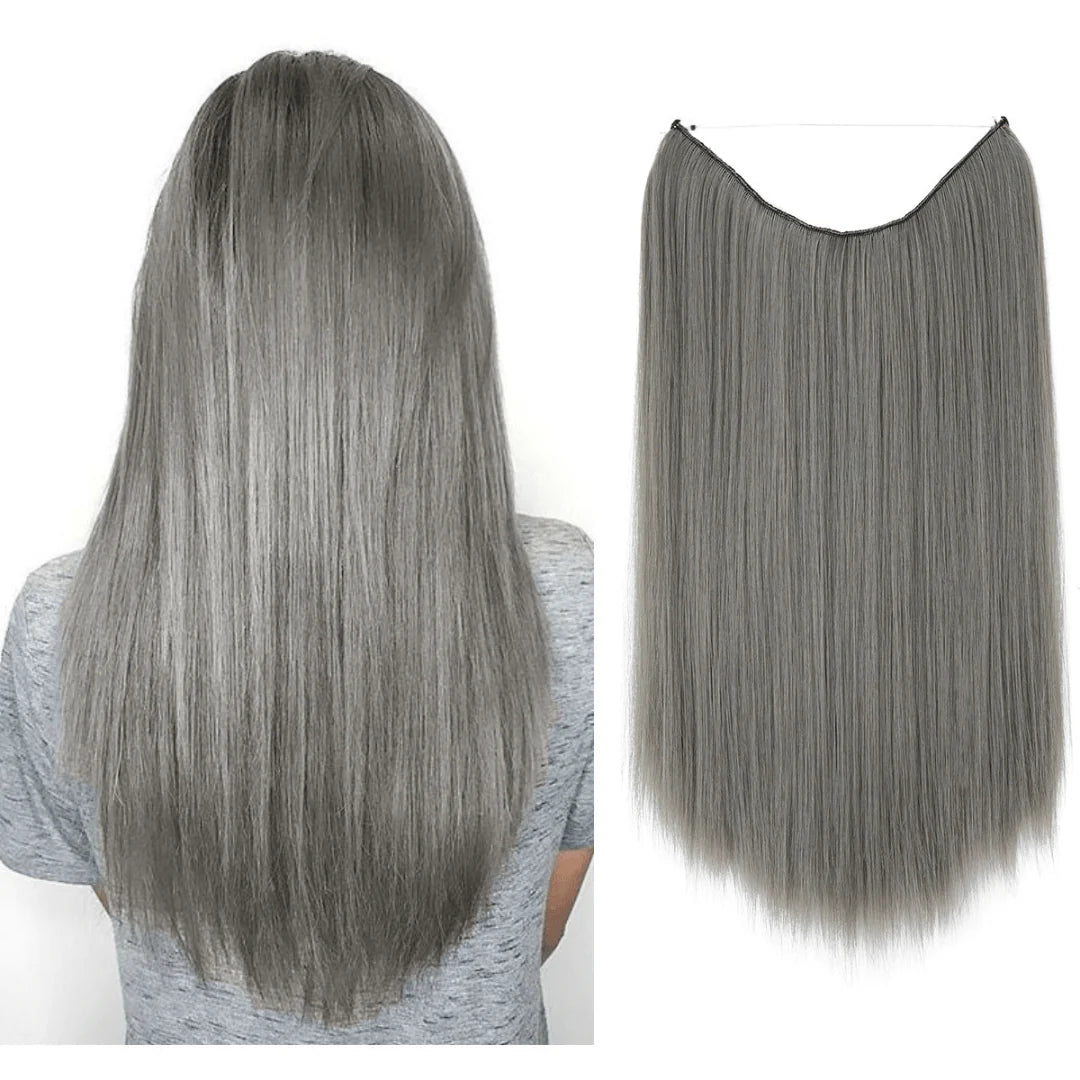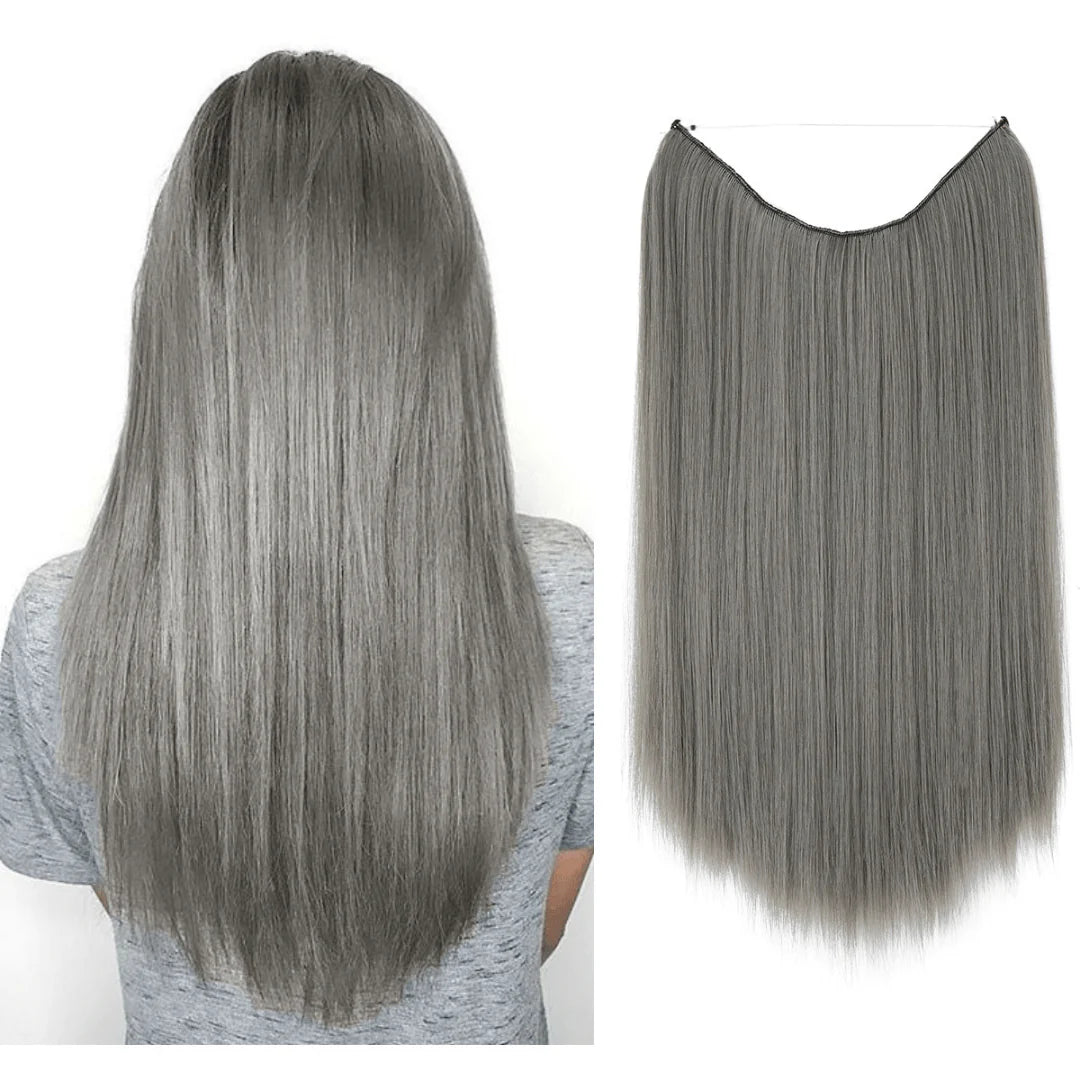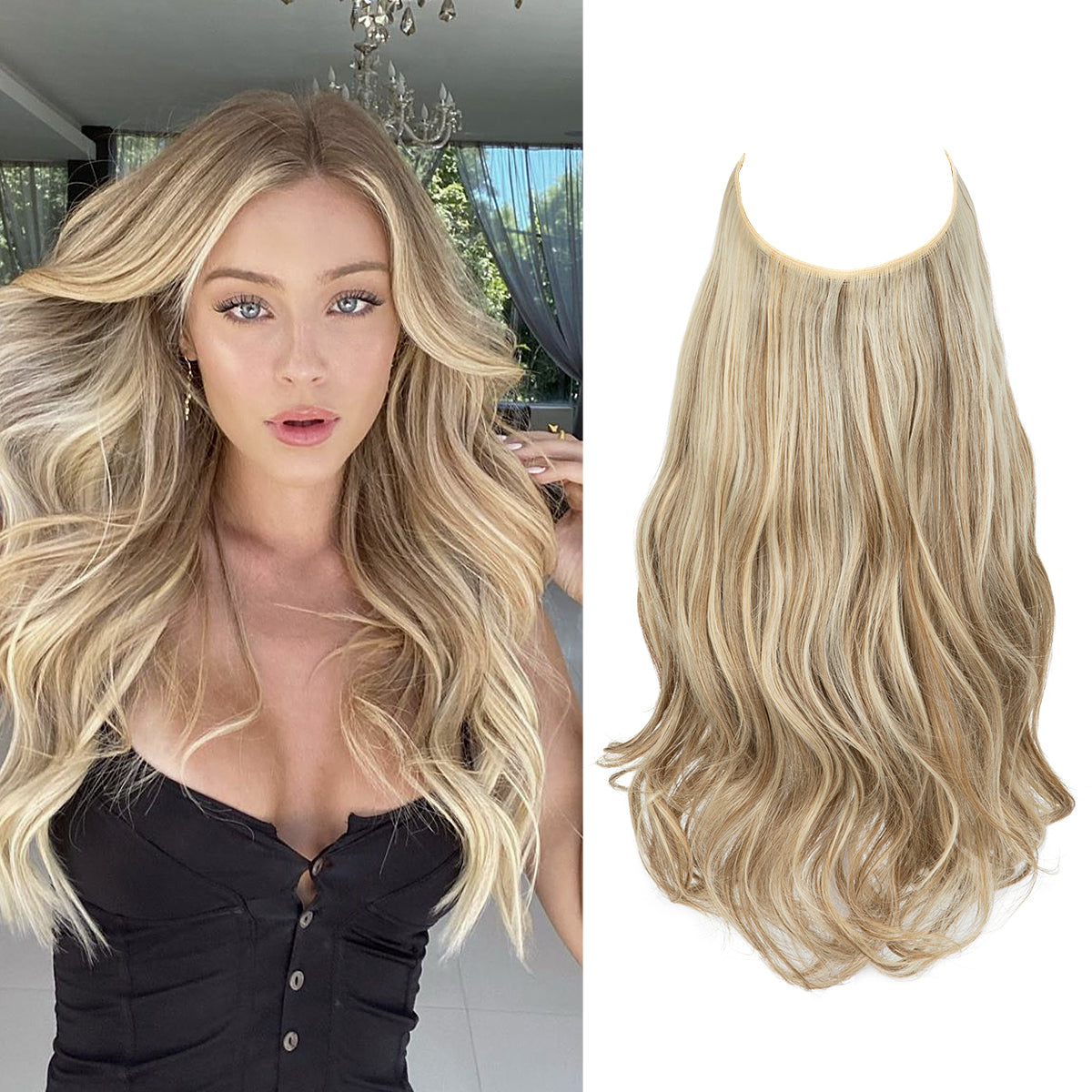
Halo hair extensions provide the perfect solution for people who want more volume and length without complicated maintenance. These extensions are simple to wear, and they transform your appearance instantly.
A perfect blend of extensions transforms your appearance from "she's wearing extensions" to "her hair looks amazing." This guide provides step-by-step instructions to achieve a perfect finish that requires no prior experience and takes minimal time.
Proper usage of clip-in extensions ensures they will not harm your hair. The right application method of clip-in extensions makes them a safe hair extension options available.
What are Clip-In Hair Extensions
Clip-in extensions are a perfect solution for people who want to change their appearance without making permanent changes to their hair. The extensions consist of real or synthetic hair wefts, which are secured to small metal clips that have protective soft silicone pads for your roots.
The extensions can be easily attached to your hair by snapping them into place ,which provides instant volume and length, and color options. The use of clip-ins requires no glue and no heat exposure, and it does not cause stress to your natural hair when applied correctly.
The application method of tape-ins and sew-ins requires bonding or sewing to the scalp, but clip-ins do not.
Here’s a quick look at how clip-ins compare to other types:
| Extension Type | Application Method | Potential for Damage | Duration | Maintenance Level |
|---|---|---|---|---|
| Clip-ins | Temporary clips | Low-moderate | 8–12 hours | Low |
| Tape-ins | Adhesive | Moderate | 6–8 weeks | Moderate |
| Sew-ins | Braided tracks | Moderate-high | 6–8 weeks | High |
| Fusion | Heat bonding | High | 3–4 months | High |
| Halo | Wire | Low | 4 months | Low |
Are Clip In Extensions Bad for Your Hair?
Using clip-in extensions correctly will not harm your hair. The right application method, combined with selecting proper quality and proper care of your natural hair between uses, will ensure safety.
The misuse of clip-ins leads to potential damage to the hair. Let’s break down why:
- Too heavy: Large or thick wefts can pull on your roots, especially if worn daily. The continuous tension from wearing clip-ins leads to hair breakage and sometimes results in traction alopecia, which is hair loss caused by hair pulling.
- The placement of extensions creates excessive stress on fragile hair regions, which include temples and hairline areas.
- The rough edges of low-quality clips have the potential to snag or tear at your hair strands.
- The extended use of clip-ins without rest for your scalp will cause your hair roots to weaken gradually.
- Rapid removal of clip-ins creates tension on your natural hair, which results in hair loss.
Washing Guidelines

- Apply a deep conditioning treatment every 2–4 weeks to keep moisture locked in.
- After each wash, use a leave-in spray or serum to maintain softness and prevent dryness.
Tips to Help Avoid Damaging Your Hair
A basic maintenance routine will protect both your clip-in extensions and your natural hair from damage. The following steps will help you achieve great results while protecting your hair from damage:
Stick to a daily wear limit:
You should limit the use of clip-ins to 8–10 hours each day. The practice of limiting wear time helps decrease scalp tension and enables your roots to get the necessary rest.
Remove extensions gently:
Never pull them out. Begin unclipping from the bottom sections before moving your way up. You should grasp your natural hair at the root while unclipping to prevent both tugging and breakage.
Maintain a regular care routine:
- A wide-tooth comb or flexible brush should be used to detangle your hair after every use.
- The extensions need occasional washing with sulfate-free shampoo, followed by application of moisturizing conditioner.
- Let them air dry on a microfiber towel—never wring or twist.
Care for your natural hair too:
Maintain both the cleanliness and health of your scalp. Light oils such as coconut should be applied once per week to preserve moisture while decreasing tension.
- A wide-tooth comb or flexible brush should be used to detangle your hair after every use.
- The extensions need occasional washing with sulfate-free shampoo, followed by application of moisturizing conditioner.
Give your hair regular breaks:
You should not wear clip-ins daily. Take your break days to give your scalp a deep conditioning treatment or perform an oil massage.
Watch for signs of damage:
If you notice:
- Scalp soreness
- Hair thinning near the clip areas
- Extra shedding after removal
…it's time to reposition or take a break.
Your hair will stay healthy, and your extensions will last longer when you combine proper wear techniques with gentle maintenance methods.
Final Thoughts: Do Clip in Hair Extensions Damage Your Hair?
Clip-in extensions serve as a safe beauty solution to enhance volume and length when you follow proper application and maintenance steps. Halo hair extensions from Thathair provide an ideal upgrade for those seeking an effortless and damage-free hair extension solution.
Our halo extensions differ from conventional clip-in extensions in their features, which include fast installation and no damage to your natural hair.
Thathair's Halo Extensions provide users with easy styling options and reduced stress because they protect their hair while being simple to use.
Related Products
Ivory Blonde Wavy
Dark Grey Straight
Bahama Beige Wavy

Josef Mohamed is a Content Marketer and Web Designer with over 6 years of experience.He brings a wealth of knowledge to his work, making him a reliable source for readers interested in practical insights about beauty. His writing style is straightforward, aiming to provide real facts and avoid common myths in the beauty industry.




